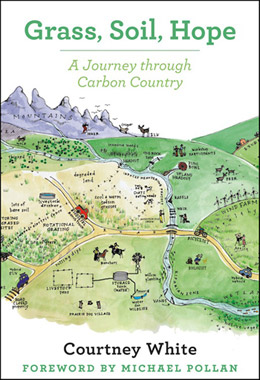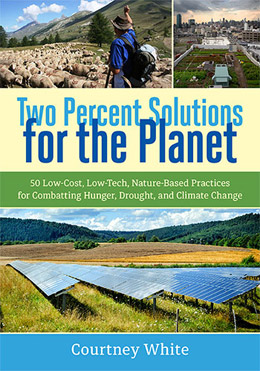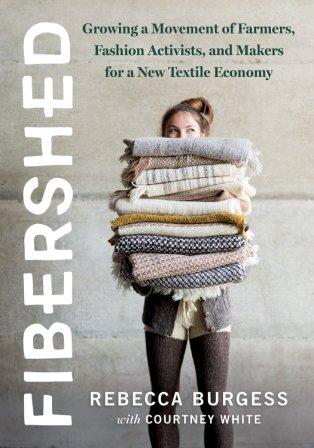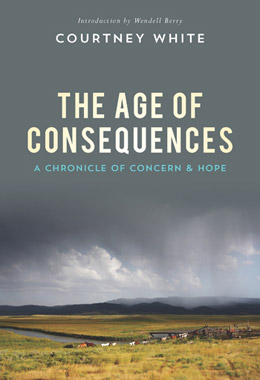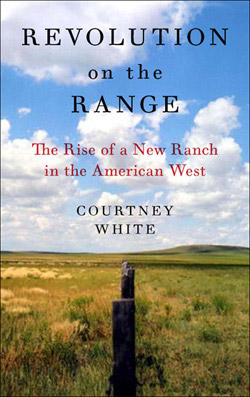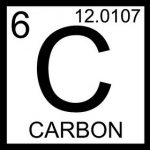I’m a former Sierra Club environmentalist who became a dues-paying member of the New Mexico Cattlegrowers’ Association.
It was a surprise to me too.
I’m a city kid who grew up on the suburban edge of Phoenix, Arizona, during the heyday of shopping malls, fast food, and fresh asphalt. The only livestock I knew were the trail horses my mother occasionally rode. I had never seen a real cow. There was a huge “ranch” near where we lived but it was full of houses. I thought the developers were just being clever with their marketing. Later, I learned it had been a real ranch.
I fell in love with the desert just in time to watch Phoenix grow heedlessly and exponentially, eating up open space like a ravenous beast. By the time I turned twenty, I had watched my precious desert disappear. In its place grew an endless crop of generic homes and office buildings, like weeds springing from the asphalt. That’s when I decided to become an environmentalist. I fought for things: wilderness, public lands, clean water. I fought against things: mines, bad laws, extinction. Livestock were on the bad list. Early on, I was told by fellow activists that cattle were “unredeemable” and had to be removed. For a while, I believed them. Then I met a progressive rancher and everything changed.
Fast forward to 2008. I’m a delegate to a three-day celebration of sustainable food called Tierra Madre, in Turin, Italy. It’s a biennial gathering of organic farmers and ranchers, food activists, writers, researchers, chefs, bakers, beekeepers, coffee growers, cheese makers, and many more. They were all there because they believe in healthy, fair, local, and very tasty food. As I do. I was there as a producer of grassfed beef from our cattle ranch – the one that earned me a membership in the New Mexico Cattlegrowers’ Association.
A few years earlier, the conservation nonprofit that I cofounded with the progressive rancher had decided to ‘walk the talk’ of sustainability by becoming cattle ranchers on 37,000 acres of public land near my home. I learned from the rancher there was a different way of doing things in agriculture. He grazed his cattle in a nature-based way, growing lots of grass. He loved wildlife and publicly supported the reintroduction of the Mexican Wolf in New Mexico. Which was amazing. He knew more about the environment than any activist I knew, including myself. When an opportunity came up, our organization decided to try our hand at ranching and there I was in Turin four years later, stunned. I was a long way from Phoenix.
How did this happen? The short answer: I had discovered regenerative agriculture. Here’s a quick definition: regenerative agriculture is both an attitude and a suite of practices that restores and maintains soil health and fertility, expands biodiversity, protects watersheds, and improves resilience in nature. It focuses on creating the conditions for life above and below ground and takes its cues from nature which has a very long track record of successfully growing things. If that sounds like what an environmentalist might want – you would be right!
The main lesson I’ve learned over many years: nature knows best. We should not do things nature won’t. Plow, for instance. If there’s one thing we could do for the planet, it would be to stop tilling the ground. It’s so terrible in so many ways. We can grow food by organic, no-till practices instead. We should also grow a diversity of species together, including livestock. Nature always farms with animals. Grazers are a part of the natural world. That means cattle too. You just have to do it right. Let animals behave naturally and the land will flourish. I’ve seen it over and over.
I believe there are five principle areas where effective, low-cost, nature-based answers to pressing challenges can be found. As the climate crisis expands, I’d like to share my recommendations for action. None stand in isolation – each is linked to the other, forming a hopeful web of answers and actions.
(1) Regenerative Agriculture
No-till, cover crops, polycultures, and animal agriculture in harmony with nature – practical and profitable. If we could do one thing for the planet it would be to stop tilling the land.
The Drawdown Project ranks regenerative agriculture as #6 on its list of most effective strategies to combat global warming and describes its purpose as to “continually improve and regenerate the health of the soil by restoring its carbon content, which in turn improves plant health, nutrition, and productivity.” It goes on to say “no other mechanism known to humankind is as effective in addressing global warming as capturing carbon dioxide from the air through photosynthesis.”
As a primer, I recommend Gabe Brown’s book Dirt to Soil: One Family’s Journey Into Regenerative Agriculture, which I am honored to have worked on. Gabe and his family transformed a degraded, conventional, chemically-dependent farm in North Dakota into a thriving, diverse, biological oasis that also produces a large amount of nutritious food. Here’s the link: Dirt to Soil.
I’ve written a great deal about regenerative agriculture spread across the books listed below. Here are two published articles that I wrote on ranching, one is focused on four farms in Australia (see) and the other on the JX Ranch in eastern New Mexico (see).
There are many very good organizations working in this field today. As a place to start, I recommend one that I helped found: Regeneration International.
(2) Soil Carbon Sequestration
Any biologically-based practice that draws down atmospheric carbon and stores it safely and long-term in the soil will create multiple, cascading benefits for all life on earth.
Photosynthesis is a miracle. It transforms atmospheric carbon dioxide (CO2) into carbon (C) and oxygen. Much of the carbon can be sequestered in the soil beneath the plant where it becomes a key component in the microbial universe underground. If managed properly, it can stay safely stored for a long period of time. Pioneering soil scientist Christine Jones has been advocating for soil carbon for many years, inspiring many of us. Here is her web site Amazing Carbon.
My life changed when I read this publication in 2009 from the Worldwatch Institute that linked food and land use to fighting climate change. It gave me the idea for a Carbon Ranch, on which I wrote this essay in 2010 (see). Quivira organized one of the first conferences on soil carbon the same year. I wrote a book on the topic in 2014 called Grass, Soil, Hope (here is the Prologue). It was one of three books published in this period that put carbon on the map. The other two are Cows Save the Planet by Judith Schwartz (see) and The Soil Will Save Us by Kristin Ohlson (see).
Interest in soil carbon as a solution to many concerns has exploded in recent years. One of the best organizations advocating for it is the Carbon Underground. On the book front, I recommend Eric Toensmeier’s practical and detailed book Carbon Farming.
For an introduction to the many attributes of carbon, our most essential element after oxygen, here is a condensed version of a blog I wrote called The Story of Carbon (see).
(3) Ecological Restoration
Much of the natural world, and nearly all agricultural land, has been damaged by hard and ignorant use and needs to be restored to ecological health.
Once controversial, restoration today is widely accepted and implemented. Thanks to the hard work of many people and organizations we know how to restore land to health using nature-based methods that are effective and low-cost, especially in riparian zones. The key is to “think like a creek” to quote Bill Zeedyk, a pioneering riparian restoration specialist that I had to the honor to work with for many years. We helped Bill write his 250-page manual on fixing creeks called Let The Water Do the Work, now available from Chelsea Green (here).
I wrote a profile of Bill Zeedyk and his work which was published in Ecological Restoration in 2009 (see). A Chapter of Grass, Soil, Hope titled ‘Affluence’ is focused on one of Bill’s students (see below).
From 2004-2010, the Quivira Coalition managed the 36,000-acre Valle Grande Grassbank, along with a herd of cattle, becoming a permittee of the Santa Fe National Forest (and earning us a membership in the New Mexico Cattlegrowers’ Association!). For a time, Grassbanks were seen as an innovative way to get ecological restoration accomplished in range and forest systems, especially the use of prescribed fire. However, in the long run they struggled financially and encountered too much opposition from the Status Quo. Here is a summary that Craig Conley and I wrote for Rangelands magazine titled Grassbank 2.0 (see). Here is another essay I wrote about our Grassbank and conservation in the Age of Consequences for the Natural Resources Journal (see).
The nexus of ecological restoration and regenerative agriculture has become a big deal in recent years. A good example is Restoration Agriculture by forest farmer Mark Shepard (see).
(4) Act Local
Watersheds, Foodsheds, and Fibersheds – inspiring and effective models of local, regenerative, and collaborative use of natural resources exist in many places.
‘Think Global, Act Local’ is an old phrase but its wisdom has only grown over time. The simplest way for any citizen to pitch in to help fight climate change is to participate in local food, fiber, and watershed endeavors. Each can lower the carbon footprint of the product immensely. A good example are fibersheds, which source clothing from a defined radius (often less than 300 miles). I had the honor of working with activist and textile pioneer Rebecca Burgess on her new book Fibershed, which I highly recommend to anyone (see).
There are many books now about the importance of local food. Three early ones that influenced me are Coming Home to Eat by Gary Nabhan (see), Animal, Vegetable, Miracle by Barbara Kingsolver (see); and Omnivore’s Dilemma by Michael Pollan (see).
On the conservation front, many collaborative conservation projects are watershed-based and led by locals. I wrote a long essay on the rise of this movement in context of the history of conservation in America titled The Fifth Wave (see). Often, ranchers led the way. Here is a profile I wrote about Duke Phillips and the Chico Basin Ranch, an early pioneer in the movement (see).
A key to local agriculture is grassfed food. Once a fringe product, grassfed meat and dairy are now widely available. The Quivira Coalition was proud to help make the case for grassfed early, both at our Annual Conference and through our grazing program on the Valle Grande Grassbank. We also sold our grassfed hamburger at the local Farmers’ Market. For more information about grassfed food, I highly recommend Jo Robinson’s web site Eat Wild.
(5) Work in the Radical Center
The radical center is where we come together to explore what we have in common rather than argue our differences.
Rancher Bill McDonald coined the term in the mid-1990s to describe an emerging consensus-based approach to land management challenges in the American West. It was ‘radical’ because it challenged orthodoxies, including the belief that conservation and ranching were part of a ‘zero sum’ game – that one could only advance if the other retreated. The ‘center’ refers to a pragmatic middle-ground of partnerships, respect, and trust – and action.
In 2003, I organized a retreat for twenty ranchers, conservationists, scientists, and others who came together to write a document calling for the end of the grazing wars in the American West. Titled An Invitation to Join the Radical Center it became a turning point for collaborative conservation in the region. Read it here.
I have written extensively about the radical center, including two columns that I penned as events took place that I pulled together in 2016 into a book titled Grassroots (see below). Articles include Reflections From a “Do” Tank (see); a chapter from Conservation for the Next Generation titled Land Health, a Common Language to Describe the Common Ground Below Our Feet (see); and Mugido: Rethinking the Federal Commons (see).
In 2005, I was deeply honored when Wendell Berry published my essay The Working Wilderness: a Call for a Land Health Movement in his book The Way of Ignorance (see).
Lastly, the Quivira Coalition was founded to help energize the radical center in the Southwest – something I can proudly say we accomplished. Here is our first newsletter (1997) which explains our hopes and dreams. In 2007, I wrote a summary of our work as the Prologue to Revolution on the Range (see).
For Other Ideas and Solutions not mentioned here see 2% Solutions for the Planet (below) which covers a broad array of ways to fight climate change using low-cost-, nature-based practices.





